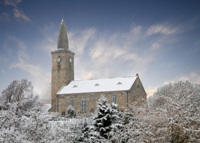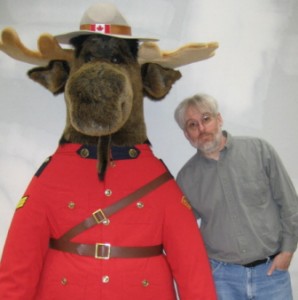
As the Christmas season approaches, it is easy to become entangled in the thorny briar patch of a thousand to-dos. “I’ve got to find the Christmas tree stand in the garage.” and, “I’ve got to swing by the post office and buy more stamps for the cards.” and, “I’ve got to make those treats that grandpa likes so much.” and, and, and! Thankfully, Charles M. Olsen’s article “Waltzing to the Eternal Rhythms” may still the writhing that sends the thorns deeper into our favorite Christmas sweater by offering a reflection on the power of holy days and ritual seasons to frame our lives.
Olsen observes that “holy days and seasons create sacred space in the cycle of the year” that present individuals and congregations with a myriad of opportunity. Sacred seasons offer us the chance to contemplate the activity of God in the world, to search our sacred stories for insights and meaning, to weave our joys and pains, struggles and successes into the fabric of our tradition.
These holy days provide an opportunity for instructing children and newcomers in the tradition and incorporating them into the community. Sacred time calls us to pause, be still, catch our breath, untangle ourselves from the thorns, mend our garments, and heal our wounds. Olsen affirms that when we turn toward the sacred, “we will be drawn into the divine rhythm of letting go, naming God’s presence, and taking hold.”
According to Olsen, the contemporary trend within some congregations to “shift from one program emphasis to another” may hinder the tapping of the deep well of traditional rituals since it may not provide enough time for adequate reflection. This frequent change may engender a sense of disconnection between the congregation’s current identity and its historical “pilgrimage.” Yet, when the congregation’s historical identity remains in active conversation with the contemporary identity of the church, the congregation may “rediscover the reason for the church’s existence.” When the stories of the current congregation, for example, those drawn from “stewardship campaigns, building projects, mission trips, parties, [and] program initiatives” are placed in relation to the stories of the historical church, “the church will find itself traveling an exciting journey with God.”

Olsen perceives that interest in the church’s calendar of sacred seasons is on the rise. He acknowledges that many may be unfamiliar with the meaning of the stories and symbols employed in the sacred festivals, yet, people seem to be attracted to the structure and framing that the calendar can provide for contemporary life. As the sacred calendar moves through the range of human experience, e.g., the agony and thankfulness of Easter, the eagerness and empowerment represented by Pentecost, the normalcy of Ordinary Time, the celebratory joy of Christmas, its richness presents us with opportunities to concentrate our attention on the complex experiences of life, intertwine our stories with those who have come before, and receive bountiful insights that may enrich our individual and communal lives.
Links
To read Charles M. Olsen’s article “Waltzing to the Eternal Rhythms” click here.


